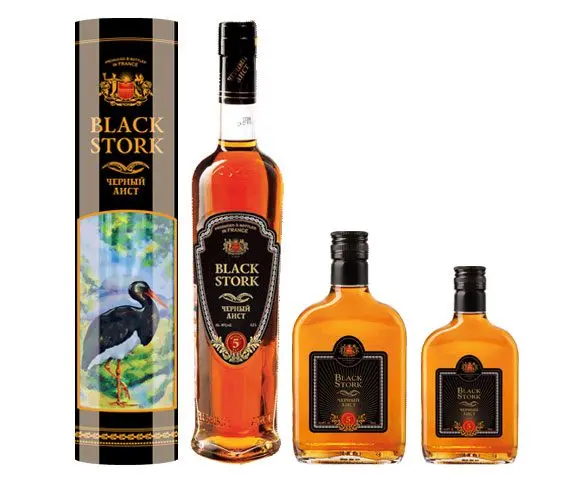The cognac blend, or as its manufacturers honestly call it – Black Stork brandy, was created by Alain Louis Royer, the world famous blender and owner of the A. de Fussigny distillery. The brand belongs to the Aroma trading house and does not yet have access to the European markets.
Historical reference. The distillery was built in 1860 by an Italian merchant who moved to the French region of Cognac. He even changed his last name to sound in the French manner – he began to call himself not Fussini, but Fussigny. Mr. Fussigny was not going to grow grapes, distill spirits, he was only interested in blends. He began to buy distillates from trusted producers, experiment with aging containers, and mix spirits of different ages. Thus was born the famous French dynasty.
Alain Louis Royet, a hereditary winemaker from a family of owners of his own cognac house in the Charente region, brought fame to cognacs. At the end of the last century, he began to create drinks from the spirits of the distillery, which first conquered France and then Europe.
For blends, Royer used distillates from Ugni Blanc grapes grown in the Grande Champagne region. They are produced in the traditional Charente way.
As a result of the first distillation, vrouillis is obtained – raw alcohol, a cloudy distillate with a strength of 24-30%. Transparent and strong vonne chauffe is the result of the second distillation. By the way, it was from this French “bon shofet” (slightly warmed up) that our “podshofe” came from, meaning “slightly warmed up with alcohol.” Spirits mature in traditional oak barrels. The company has its own cooperage workshop, where craftsmen make barrels of various shapes and sizes.
In 2007, publications appeared in the Russian media about the successful purchase of the Aroma trading house (Russia). This purchase was A. de Fussigny. An attentive consumer may notice several strange factors that accompany this event.
First, the A. de Fussigny website does not say anything about the sale, change of ownership, or even the Black Stork trademark.
Second: to buy a French cognac house in Charente, in the heart of Cognac, and call the products “brandy” is illogical.
Third: why translate the French Cigogne Noire into English – Black Stork, if you can immediately into Russian, as is usually done with stamps intended for sale in a particular country.
There is some inconsistency in this. Maybe the Black Stork blend was created by Royer on the order of Aroma, or they sold not a cognac house, but one brand. Or the drink is simply made from French spirits at the same Vismos plant in Chisinau, bought by the Aroma trading house in the fall of 2002. Yes, and many have probably heard about the Moldovan divin “Black Stork”.
But Black Stork is popular and has a good reputation among spirits drinkers.
Types of cognac Black stork
Black Stork, 3 Years Old (40%). Amber brandy made from three-year-old cognac spirits aged in French oak barrels. Nutty-woody aroma with subtle notes of prunes. Nice nutty taste with hints of vanilla. Warm vanilla aftertaste. Excellent digestif. Pairs with coffee and chocolate.
Black Stork, 5 Years Old (40%). Bright mahogany-colored drink. Sweet aroma with velvety tones of cherry, vanilla and prunes. Harmonious taste with fruity notes and chocolate aftertaste. Recommended by restaurateurs as a digestif – pure.
Black Stork, 8 Years Old (40%). Brandy rich mahogany color pleasantly smells of candied fruits, burnt oak and dried cherries. Balanced taste with hints of honey and dried fruits and a subtle nutty aftertaste. Recommended as a digestif.










